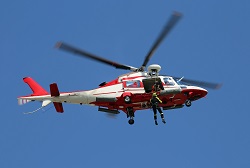More accurate detection of pulsar signals
Pulsars are fast rotating neutron stars that emit electromagnetic radiation, which is received on Earth in a series of pulses. Due to emitting very stable signals, pulsars can act just like space lighthouses. But could pulsar signals one day fully replace GPS satellites, for example, in air traffic control? To investigate this possibility, researchers initiated the project PULSARPLANE(opens in new window) (PulsarPlane: Worldwide air transport operations). Although pulsars are useful for navigation, they are difficult to detect sometimes. The project's advances in antenna design, radio frequency (RF) circuitry and signal processing are paving the way for faster and more accurate detection of pulsar signals. The first problem that needs to be overcome is very low signal strength. Researchers proposed use of large antenna arrays in aircraft wings, thus covering a large part of the sky. Planar antenna designs do not interfere with wing aerodynamics. The difference in time of arrival at each antenna will allow determining the signal direction. Weak signals call for coherent detection structures with precise timing synchronisation. Different radio receiver architectures were studied and evaluated for their ability to reduce interference and amplify the signal-to-noise ratio. All RF front-end solutions required complex filters and state-of-the-art analogue-to-digital converters with high sampling rate and resolution. They also required use of RF amplifiers with increased sensitivity so as not to contaminate weak signals with noise. Considering that pulsar positions are not exactly known and that they move at great velocities with respect to Earth, a fifth pulsar signal is necessary to determine the pulse transmission time. To cope with the relative motion between Earth and pulsars, an almanac needs to be provided containing a detailed list of pulsars with arrival times on fixed locations. Researchers also thoroughly investigated two signal processing methods for extracting pulsar information: epoch folding and matched filtering. Perhaps in the future, pulsar signals will be able to completely replace GPS signals; but for now, even with advances in technology, GPS will be more accurate. Unfortunately, particularly large antennas are highly necessary for detecting weak signals, and thus are not likely to be used in aircraft and certainly not in handheld devices.







